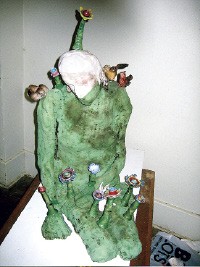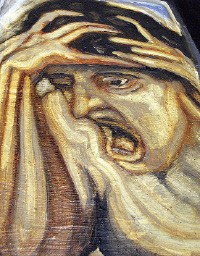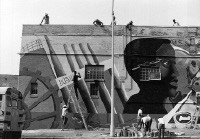Kaywin Feldman was the youngest director ever hired to run the Memphis Brooks Museum of Art. Beginning January 2nd, Feldman will become the first female director of the Minneapolis Institute of Arts, one of the 10 largest museums in the country.
Though she’s not an artist herself, Feldman’s always been passionate about art. That led to studying art history and museum management at the University of London, where she received her master’s degree.
As director of the Brooks, Feldman was responsible for bringing in exhibits that would resonate with Memphis’ culturally diverse demographic. She also managed the museum’s staff, dealt with the business side of running the museum, and acquired pieces for the Brooks’ permanent collection. She’ll have similar duties at the Minneapolis Institute, but considering that the Brooks is much smaller than the Minneapolis museum, she’ll have her work cut out for her. — Bianca Phillips
Flyer: What do you anticipate your biggest challenges will be at the Minneapolis Institute of the Arts (MIA)?
Feldman: I’ll be running a much larger institution. Our staff at the Brooks is about 50, and the staff at MIA is 300. Our budget’s $5 million. Their budget’s $25 million. We have a 90,000-square-foot building. They have a 400,000-square-foot building. Their collection is 10 times our size.
Any challenges with being the first female director?
I think everyone’s pretty excited to have a female director, so I don’t think there’ll be any problems there.
As the Brooks’ youngest director, did you ever face any age discrimination?
I certainly wouldn’t call it discrimination, but there was definitely a period of skepticism. There’s always a period of that with any new director, but I think it was a little stronger given my age.
How did you decide which exhibits to bring to Memphis?
Because the Brooks shows a little bit of everything, we try to balance out an old masters exhibition with a contemporary art exhibition. We’re very committed to being an inclusive art museum by representing work by other cultures and African-American artists. We have to make sure every exhibition here balances those things.
What was your favorite exhibition at the Brooks?
The exhibition we brought in last fall, which was “Masterpieces from the Fitzwilliam Collection.” It was an English private collection that started in the 17th century, so it included Anthony van Dyck, George Stubbs, and Joshua Reynolds.
Do your preferences affect what exhibits you show?
No, they really don’t. We have to think so much about what will bring people into the museum, and that’s not always necessarily what I like.
Before you began at the brooks, the museum was often criticized for attracting a mostly white audience. Do you feel like you got a more culturally diverse group into the museum?
It’s certainly been a priority for our organization since the day I arrived. I do think we’ve made a difference. We’ve brought in exhibitions that reflect the community. We’ve brought significant numbers of works of art by African Americans to the collection. We’ve increased our African-American programming. We’ve seen results in attendance, as well as membership of the museum.
Which acquisitions for the Brooks’ permanent collection are you most proud of?
We bought a Dutch still-life painting from the 17th century by an artist named Roelof Koets. That’s a very fine Dutch picture. I’m very proud of the Nam June Paik sculpture in the rotunda. In general, I’m pleased with the way we’ve added to the collection of work by African-American artists and the photography collection.
Who will head up the Brooks in the interim?
Al Lyons. He’s on the board of trustees. It usually takes a year from the time the director announces they’re leaving before a new person arrives.



